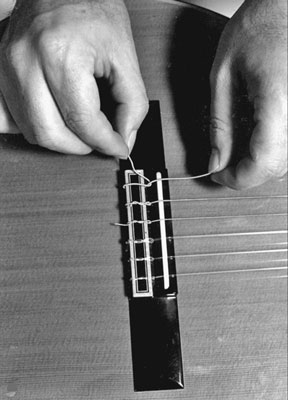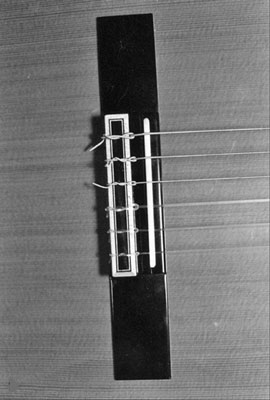Once you've removed a guitar's old strings, you’re ready to put on new ones. The methods for stringing a guitar diverge slightly, depending on the type of guitar you have and the type of strings you use.
There are several differences between nylon-string guitars and steel-string acoustics. The bridge doesn’t use bridge pins (strings are tied off instead), and their headstocks are slotted and have rollers, as opposed to posts. In one sense, nylon strings are easier to deal with than steel strings because nylon isn’t as springy as steel. Attaching the string to the tuning post, however, can be a bit trickier.
Unlike acoustic steel strings, nylon strings have no ball at one end. You can, therefore, attach either end of the string to the bridge. If the ends look different, however, use the one that looks like the middle of the string, not the one that has the loosely coiled appearance.
You can buy ball-ended nylon-string sets, but they’re not typically used.
Here's how you attach the string to the bridge:
Remove the old string (if you haven't already).
Pass one end of the new string through the hole in the top of the bridge, in the direction away from the soundhole.
Leave about 1-1/2 inches sticking out the rear of the hole.
Secure the string by bringing the short end over the bridge and passing it under the long part of the string.

Then pass the short end under, over, and then under itself, on the top of the bridge.

Pull on the long end of the string with one hand and move the knot with the other to remove excess slack and cause the knot to lie flat against the bridge.
You may need a couple tries to get the end at just the right length, where not too much excess is dangling off the top of the bridge. (You can always cut the excess away, too.)
Now you're ready to attach the string to the tuning posts and get pickin'.

